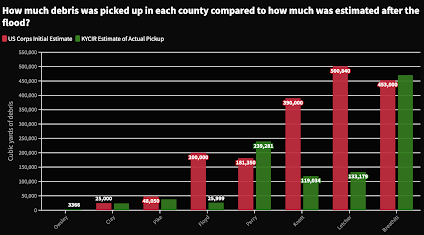The new corps members with rural beats or employers include:Adrianna Adame, Buffalo's Fire, indigenous democracy in North Dakota
Destini Ambus, Longview News-Journal, Tyler Morning Telegraph and Marshall News Messenger, health challenges in Northeast Texas
Caleb W. Barber, The Mitchell Republic/Forum News Service, rural issues and the South Dakota legislature
Carly Berlin, Vermont Public and VT Digger, housing and infrastructure
Henry Brannan, VPM News/WMRA, Harrisonburg, Va., rural health care
Elijah de Castro, The People-Sentinel, Barnwell, S.C., rural communities in the Low Country
Jordan Green, Longview News-Journal, Tyler Morning Telegraph and Marshall News Messenger, under-served communities
Lucille Lannigan, Albany Herald, rural communities in southwest Georgia
Andrew M. Lusk, KUCB, Unalaska, regional reporting in the eastern Aleutian Islands
Stephen Marcantel, The Acadiana Advocate, rural communities in southern Louisiana
Nikolai Mather, WHQR, Presque Isle, Maine, the rural "safety net"
Carlos Nogueras, Texas Tribune, Permian Basin communities
Jordan Rusche, Tioga Tribune, rural communities in northwest North Dakota
Daniel Schmidt, Ouray County Plaindealer, Ridgway, Colo., local government accountability
Samuel Shaw, Longview News-Journal, Tyler Morning Telegraph and Marshall News Messenger, rural to urban transformation
Isabella Weiss, WVIA Public Media, Pittston, Pa., rural governments
Sofi Zeman, Uvalde Leader-News, education, safety and crime
Current corps members who have rural beats include:
Laura Harbert Allen, 100 Days in Appalachia, religion in Appalachia
Macon Atkinson, Post and Courier, Charleston, S.C., presidential primary from a rural perspective
Leo Bertucci, Victoria (Texas) Advocate, the local energy industry
Dustin Bleizeffer, WyoFile, energy in Wyoming
Riley Board, KDLL, Kenai, effects of state budget policies on rural Alaska communities
Aaron Bonderson, Nebraska Public Media, portraits of Nebraskans, especially rural and of color
Bobby Brier, NJ Spotlight News, mental health issues, especially affecting rural New Jerseyans
Sierra Clark, Traverse City Record-Eagle, indigenous communities in northern Michigan
Monica Cordero Sancho, Midwest Center for Investigative Reporting, environmental impact of Iowa fertilizer (Mississippi River Basin Project)
Colleen Cronin, ecoRI News, environmental issues in rural areas
Amy Diaz, WFDD, Winston-Salem, education in the Piedmont and mountain North Carolina
Alex Driehaus, Valley News, West Lebanon, N.H., and White River Junction, Vt., photography
Connor Giffin, Louisville Courier Journal, pesticide runoff and climate change (MRB project)
Sofia Gratas, Georgia Public Broadcasting, rural health care in the "stroke belt"
Theo Greenly, KUCB, Unalaska, regional reporting in the eastern Aleutian Islands
Lucy Grindon, North Country Public Radio, low-income families in rural northern New York
James Hanlon, The Spokesman-Review, Spokane, rural eastern Washington
Ellen Heffernan, Mountain State Spotlight, rural and community reporting in West Virginia
Rachel Hellman, Seven Days, Burlington, challenges and opportunities in Vermont's small towns
Isabel Hicks, Bozeman Daily Chronicle, the future of agriculture
Teresa Homsi, WCMU Public Radio, environmental concerns in rural Michigan
Jamie Jiang, North State Public Radio, Chico, Calif., wildfires and their aftermath
Chloe Johnson, Minneapolis Star Tribune, land use, water and wildlife (MRB Project)
Laura Kebede, Institute for Public Service Reporting at the University of Memphis, civil rights cold cases in Tennessee
Emily Kenny, Spectrum News, digital coverage of farming and food production in upstate New York
Tash Kimmell, KCAW, Sitka, Alaska, coverage of Sitka and surrounding communities
Cami Koons, Kansas City PBS, rural issues in Missouri
Sarah Lapidus, The Arizona Republic, rural communities in southern Arizona
Lacey Latch, The Arizona Republic, rural life in northern Arizona
Michael Livingston, Interlochen Public Radio/Traverse City Record-Eagle, rural northern Michigan
Jayme Lozano, Texas Tribune, community reporting in the Panhandle and South Plains
Grant McLaughlin, The Commercial Dispatch, Columbus, Miss., economic and workforce issues in rural Mississippi
Sarah Michels, Bowling Green Daily News, community reporting in southern Kentucky
Xcaret Nuñez, KOSU, Oklahoma agriculture and rural issues
Santiago Ochoa, Yakima Herald-Republic, rural health care in Yakima County
Theo Peck-Suzuki, WOUB Public Media, Athens, Ohio, childhood poverty in southeast Ohio
Michael Symonds, WMUK, Kalamazoo, Mich., rural meets metro
Phoebe Taylor-Vuolo, WSKG , Vestal, N.Y., rural health care in New York state
Graycen Wheeler, KOSU, rural Oklahoma water issues




















